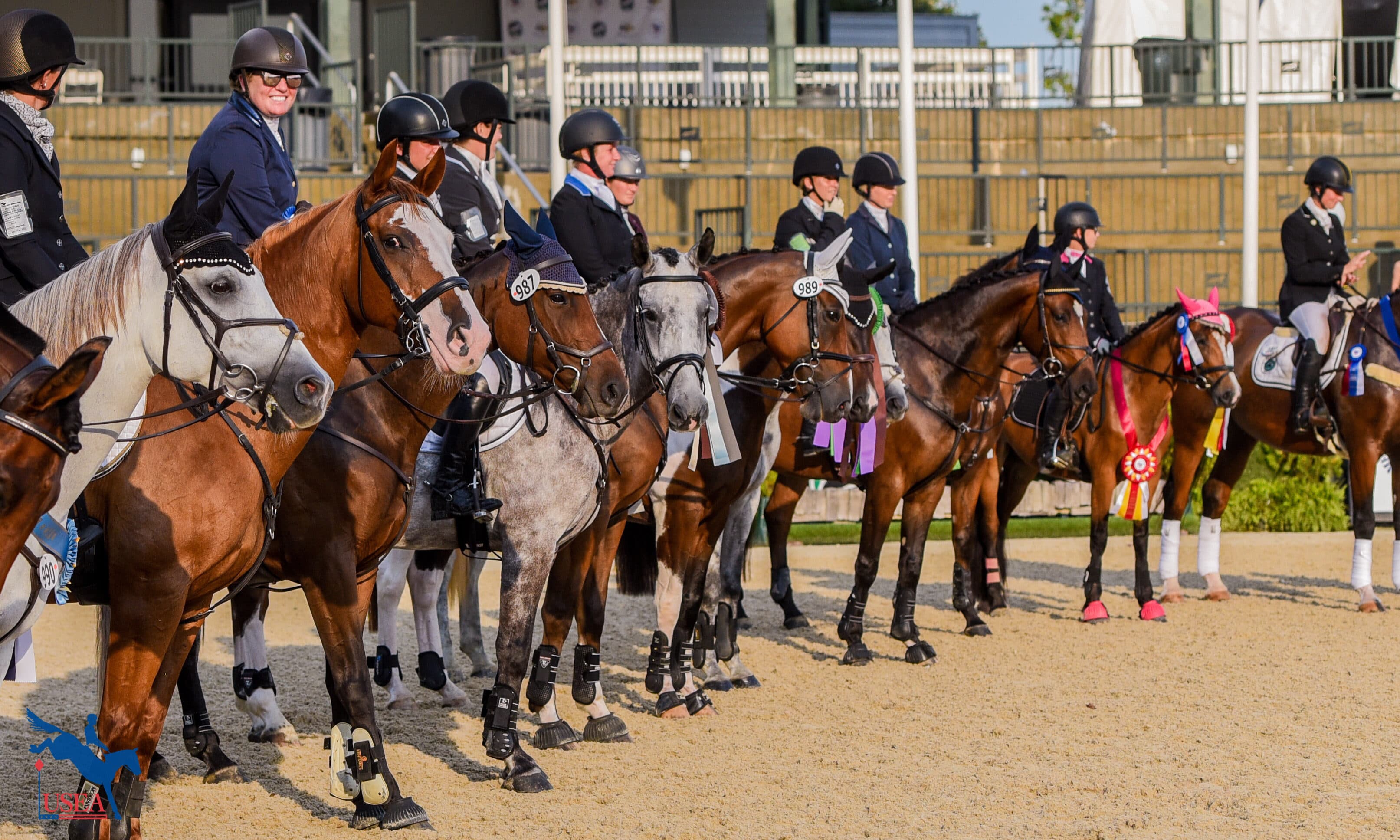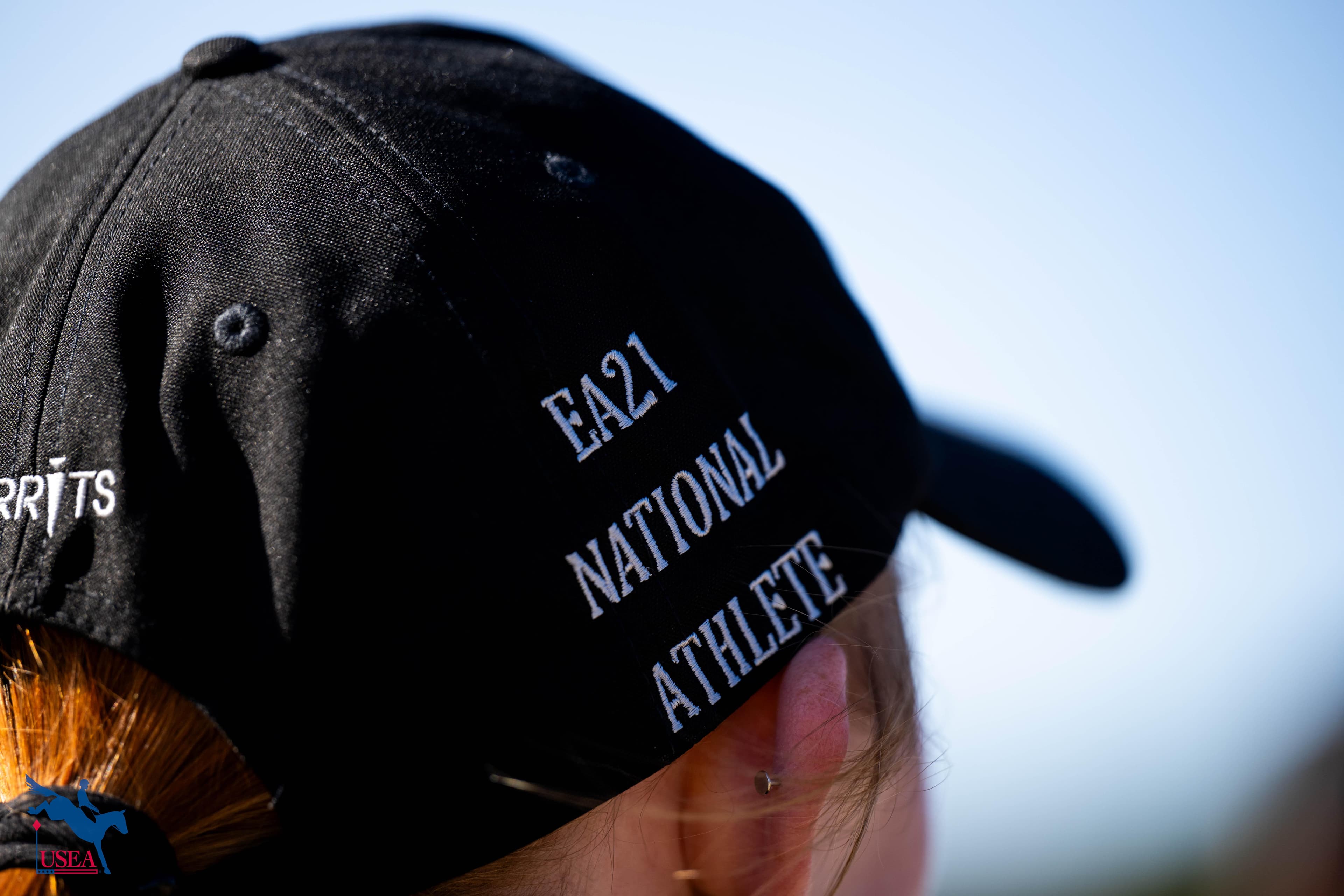Quality Over Quantity: The New USEA Leaderboard Point System

The USEA has launched a new system for tabulating points for the year-end leaderboards which will begin with the 2021 competition season. Previously, leaderboard points were awarded based on placing and further determined by the number of starters in a division, often giving the focus to the quantity of rides a competitor could complete in a given competition season. The new system places emphasis on quality by limiting the types of scores that qualify for leaderboard points and counting only a rider’s six top results towards the leaderboards.
“The system has been under review for a while,” shared Sharon Gallagher, USEA Senior Director of Competitions. “Packy McGaughan was a big promoter of changing the system from quantity – the more results you had the better chance you had – to the quality of the ride. It is a more complex use of the point system to determine a final standing. Yet, utilizing a point system is really the only practical way to make determinations based on performance and coming up with a solution wasn’t easy. The FEI had already put a similar system into place for their world rankings and regional rankings, and that’s where the foundation for this system came from.”
“It’s been a central point of conversation for a while,” reiterated USEA CEO Rob Burk. “For example, it was brought up at the USEA Annual Meeting & Convention in 2017 that when Karen Stives won Rider of the Year in the 1981, she did it with about a dozen rides. These days we’re seeing riders with significantly more rides than that contributing to their overall leaderboard placing.”

The new system was first approved by the USEA Calendar, Competition, & Rules Committee before going before the USEA Board of Governors for final approval to implement for the 2021 competition year, which started on December 1, 2020.
The intention with the new leaderboard calculations, which is described in detail below, is to place the emphasis on the quality of a competitor’s rides, not the quantity of rides they are able to complete.
Shown below is the top 10 from the 2019 USEA Rider of the Year leaderboard:
|
Rank |
Name |
Points |
|
1 |
Boyd Martin |
841.5 |
|
2 |
Phillip Dutton |
654.5 |
|
3 |
Lauren Nicholson |
591.5 |
|
4 |
Tamra Smith |
508.25 |
|
5 |
Elisabeth Halliday-Sharp |
488.0 |
|
6 |
Bruce Davidson Jr. |
460.0 |
|
7 |
Leslie Law |
412.0 |
|
8 |
Doug Payne |
404.5 |
|
9 |
Will Faudree |
363.0 |
|
10 |
William Coleman |
361.0 |
Now, here’s what the top 10 from the 2019 USEA Rider of the Year leaderboard would have looked like when calculated using the new system:
|
Rank |
Name |
Points |
|
1 |
Boyd Martin |
372 |
|
2 |
Lauren Nicholson |
325 |
|
3 |
Phillip Dutton |
294 |
|
4 |
Doug Payne |
222 |
|
5 |
Elisabeth Halliday-Sharp |
209 |
|
6 |
Bruce Davidson Jr. |
204 |
|
7 |
Tamra Smith |
202 |
|
8 |
Leslie Law |
200 |
|
9 |
Lynn Symansky |
194 |
|
10 |
Felix Vogg |
177 |
While some of the standings shift around, Boyd Martin is still ranked number one on the leaderboard. Overall point values are also significantly lower and more tightly packed because they are based on a maximum of six results.
Changes to the USEA Leaderboard Point System
To understand the leaderboard it is important to understand the terminology. A final score is the number of penalty points with which a pair finishes a competition – a dressage score plus any jumping or time faults obtained in the jumping phases. A final placing is the result based on where a score falls in the division. Leaderboard points are based on the final placing.
Scores -> Placings -> Points
The first significant change to the USEA leaderboard point system is that only Minimum Eligibility Requirements (MERs) will be considered for the year-end leaderboards. MERs can be earned at either USEA recognized competitions in the U.S. or, for competitions outside the U.S., those that are recognized by the FEI.
MERs for Beginner Novice, Novice, Training, Modified, Preliminary, Intermediate, and Advanced require the following:
- Dressage – no more than 50 penalty points
- Cross-country – no jumping penalties and no more than 36 time penalties
- Show jumping – no more than 16 jumping penalties
MERs for the FEI levels (CCI* through CCI5*-L) are consistent with the following:
- Dressage – no more than 45 penalty points
- Cross-country – no jumping penalties and no more than 30 time penalties for a 1/2/3/4* and no more than 40 time penalties for a 5*
- Show jumping – no more than 16 jumping penalties
The second significant change is that leaderboard point values are only applied to the top 25 percent of starters in a division that have achieved an MER. So, for example, in a division of eight horse-and-rider combinations, only first and second places would be eligible to receive leaderboard points based on their placings and ONLY if those scores were MERs. A score that includes 20 penalty points from cross-country or more than four rails in show jumping, even if that final score finishes in the top 25 percent of the division, is not eligible to receive leaderboard points.
These two new changes will determine which placings are eligible to receive leaderboard points. The third change determines which of those points are counted on the year-end leaderboards and determine final leaderboard standings. The points based on the six best scores earned by horse or rider during the current competition year will determine the final leaderboard standings. For example, if a rider achieves eight MERs in a competition year and their final score places them in the top 25 percent of their division, only the points earned from the six best scores will be counted toward the year-end leaderboards. It is important to note that the six scores that qualify for an overall leaderboard may not be the same six scores that qualify for a divisional leaderboard.
A rider does not need to have six eligible scores to appear on the leaderboard. A horse or rider could achieve points from a single placing at a single event and still be placed higher on the leaderboard than a horse or rider who achieved fewer points from multiple placings at multiple events, as some types of events (like FEI and USEA Classic Series Events) are more heavily weighted in the USEA leaderboard point system than regular horse trials.
In the event that there is a tie for leaderboard champion, the champion will be determined by taking the average of their top six scores. The horse or rider with the lowest average will be named champion. If there is still equality, the tie remains.

An Example
Sally Jones and her horse Buckaroo are competing in a Junior Novice division. There are 20 total horse-and-rider combinations in her division. At the end of the weekend, only the top five placings will be eligible to receive points base on their final placings.
Sally and Buckaroo have a great weekend. They score a 27.5 in dressage, jump double clear on cross-country, and have one rail down in show jumping to finish the weekend on a final score of 31.5. This score is good enough for second place. Because Sally and Buckaroo obtained an MER and their score relative to their competitors placed them in the top 25 percent of their division, they will receive 2.5 points towards the overall year-end leaderboards and 6 points towards the Novice year-end leaderboards for which they qualify.
Sally’s friend Jane Smith and her horse Quicksilver didn’t have quite as good of a weekend. They scored an 18 in dressage and jumped clear in show jumping but had one refusal on cross-country to finish on a final score of 38. Jane and Quicksilver finished in fifth place, also within the top 25 percent of their division, but because their score is not an MER, they will not receive any leaderboard points based on their final placing.
This was Sally and Buckaroo’s sixth and final event of the competition season. Her score of 31.5 is one of her six best scores for the whole season. So, the leaderboard points she earned for finishing in second place on a score of 31.5 are added together with the points she earned from her other eligible completions to create her final leaderboard score.
Key Takeaways
- The six point values that coincide with the six placings as determined by a rider’s best six scores over the current competition year will determine final year-end leaderboard standings. A rider’s best six scores ultimately determine which placings and point values will be counted towards the year-end leaderboards.
- Only MER rides earned at recognized competitions in the U.S. and competitions outside of the U.S recognized by the FEI will count for leaderboard points.
- The top 25 percent of starters in a division will earn points on rides that are MERs.
- In the event there is a tie for leaderboard champion, the champion will be determined by taking the average of the top six scores. The horse or rider with the lowest average will be named champion. If there is still equality, the tie remains.
- At horse trials offering a dressage test and show jumping test at the higher level, points will be awarded based on the level of cross-country.
- Cross-country completions without jump penalties are awarded points at USEA Classic Series events including P3D, M3D, T3D, N3D, and BN3D and CCI levels, regardless of placing within 25 percent of the division.
- Leaderboard points will continue to accumulate during the competition lifetime of each horse, but only the points earned in the current year count toward the year-end awards.
- The new leaderboard point system will not affect the leaderboard upgrade placing/point system other than that an upgraded placing will only be eligible to receive upgrade points if the result is an MER. Upgrade placing/points do not apply to the overall leaderboard or horse leaderboards.
The 2021 overall and division leaderboards will go live on the USEA website soon. To view the new USEA leaderboard point system, including charts detailing placings and their point values, click here.














